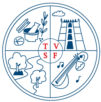The legacy of Indian music to mankind lies in its unique system of ragas.
Raga (also, rag or ragam) is a musical scale, peculiar to Indian music. It is also an emotional or creative idea which utilizes the sound frequencies (swaras) and rhythms (layas) at their most subtle levels of oscillations in terms of their emotional appeal.
The Indian note or swara is distinguishable from its Western counterpart, as its frequencies are not so rigidly fixed and are allowed to oscillate freely, depending on the emotional demands in rendering a raga.
Sound-experiences in nature – in waterfalls, sea-waves, mountain streams, burning fire, rolling stones, wind-blow etc. and the most natural of the human vocal expressions of intense joy or painful sorrow can be found incorporated to enhance spontaneity in the emotional expression through oscillations in swara rendering.
Crudely stated, swaras can be compared to the vehicles on the Indian roads, which oscillate and struggle in order to avoid accidents and reach their destination!
Tradition demands that a raga should sound pleasant (“ranjayati itih ragah’),
To achieve this effect a traditional raga is supposed to be embroidered with at least five notes (swaras or sur or swaram) which may go up to a maximum of seven.
Proto-Ragas: Tracing the Roots to Nature
Let’s coin a new term ‘proto raga’ to distinguish those natural, unpretentious and spontaneous sound clusters and swara phrases, who do not qualify to be referred to as ‘ragas’, as they are short of the minimum requirement of notes, namely five.
These proto-ragas, which may have one, two, three or four notes, have their own beauty and charm like those physically or mentally-challenged amongst us! They sound more intuitive than the ‘normal’ ragas and despite their ‘handicap’ they please us with their sincerity, spontaneity and naturalness.
For, much before the languages could be invented, spontaneous sound expressions such as aahs, oohs and ouch had to be relied upon as a reliable means of communications. Their tonal frequencies and oscillations distinctly conveyed the raw feelings – love and enjoyment or hatred and pain rather than the letters and words, which came to occupy and distort the human societies!
Proto-ragas reached their zenith when they came to be employed in liturgical and devotional pieces: Gregorian chants, Vedic chants, Quranic verses, Shahbad etc. No doubt, they played a vital role in the shamanic rituals aimed at altering one’s consciousness level, which promised relaxation and even healing. Recent experiments conducted by this author with mentally-challenged adults and children indicate their usefulness in involving them readily into music, as compared to frilly-evolved ragas and elaborate raga alapana.
Archika-The One Note Wonder
Archika, a Sanskrit term, refers to a single tone or which gets repeated endlessly. In other words, It deals with monotones.
Repeatedly chanting a tone -all over again and again – is a time-tested technique to achieve what is called ‘ekagra’ or one-pointedness.
For the uninitiated and the uncommitted, however chanting monotones may sound boring and monotonous. But, as one gets accustomed to this “treadmill” music, what starts as an absurd exercise starts working wonders.
Modern researchers have confirmed recently that iterative music can help in diverting one’s mind away from a pain location. Through the process of almost endless repetition of say, ‘sa, sa, sa’ the note involved in archika, the mind gets thoroughly pounded and in due course benumbed too! Take for instance, an ek-tara or any single string instrument. As you go on repeatedly striking it, focusing your mind into the monotones of archika, what starts initially as a drudgery ends up as an ecstatic spiritual experience!
Gathika : The Two Note wonder
Addition of a companion note ‘ni’ to the already existing ‘sa’, creates a new genre, Gathika. This marriage of two notes paves way to the eventual evolution of Samika.
Samika : The Three-Note wonder
While two is company, three, becomes a crowd! The same is applicable to Samika too. The three note-combination (‘sa’, ‘ni’ and ‘ri’) adds a new dimension to our musical experience, All the three notes as “neighbours” in an octave and they are friendly to each other too. ‘Ni’, which is the low-pitched is called Anudatta, ‘Sa’ that is central is Svarita and ‘Ri’ which is the high- pitched is Udatta.
Vedic recitations make use of these notes profusely. For example, the vedic chanting of Mantra pushpam reads like this: RISA NISARI NISARI NISARI SASA SASA SA (Yopam ayata namveda ayata navaan bhavati)
Dr Balamurli Krishna’s Recent Experiments
Dr. Balamurli Krishna, the well- known exponent in the Carnatic system of music has made some path-breaking research on proto-ragas. Some of the proto-ragas (called ‘ragas’ by him) have been evolved by him by combining some friendly swaras that are detailed in the box.
| Proto Raga | Arohana | Avarohana |
| Sarvasri | SA, MA, PA, SA | SA, SA, PA, MA, SA |
| Mahati | SA, GA, PA, NI, SA | SA, NI, PA, GA, SA |
| Sumukam | SA, RI, MA, NI, SA | SA, NI, MA, RI, SA |
| Lavangi | SA, RI, MA, DHA, SA | SA, DHA, MA, RI, SA |
Conclusion
Proto-ragas, by the virtue of their being woven in a limited sound frequency may not provide that richness of musical experience, available in fully-evolved ragas. Nevertheless, they are more direct and soothing. They exist nearer to our heart and soul, than our mind. This could be, probably, a reason why the mentally-challenged among us react more spontaneously to protoragas than to musical pieces composed in fully evolved ragas. Being natural and yet-to-evolve, perhaps proto-ragas are identified readily with them. This could be, no doubt, an ideal area for further research in our scientific exploration of the brain with sounds, neuro-musicology.
This article was published in ‘AYURVEDA AND ALL’ August 2005, Page 35, 36
Similar to article was published in ‘Bhavan Journal’ May 15, 2005 – Pages 93 5o 95
Edited by Geeta shreedar, March 30, 2021
